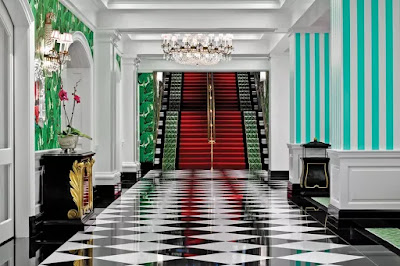WEEK 12 - Post Modernism

Post modernism is the period of artistic and architectural development from the 1960's onward. The developments in the 1970's, 80's and 90's challenged the precepts of modernism. In architecture, elements of classicism and of other historical traditions were integrated in buildings. During this time there were many revivalist movements, and a revolt against the strict rationality of Modernism. The hopes of the optimistic modernist movement were dashed because of the worldwide energy crisis. This crisis began when members of the Organisation of Arab Petroleum Exporting Countries proclaimed an oil embargo against nations that they believed were supporting Israel during the Yom Kippur War, which included the US. In the 1980's, as the economy started to improve, we see a self-orientated consumer culture, and people were "grabbing" all that they could from the past. In the 1990's, there is a rise of the environmentalists. They saw that the amount of ...





